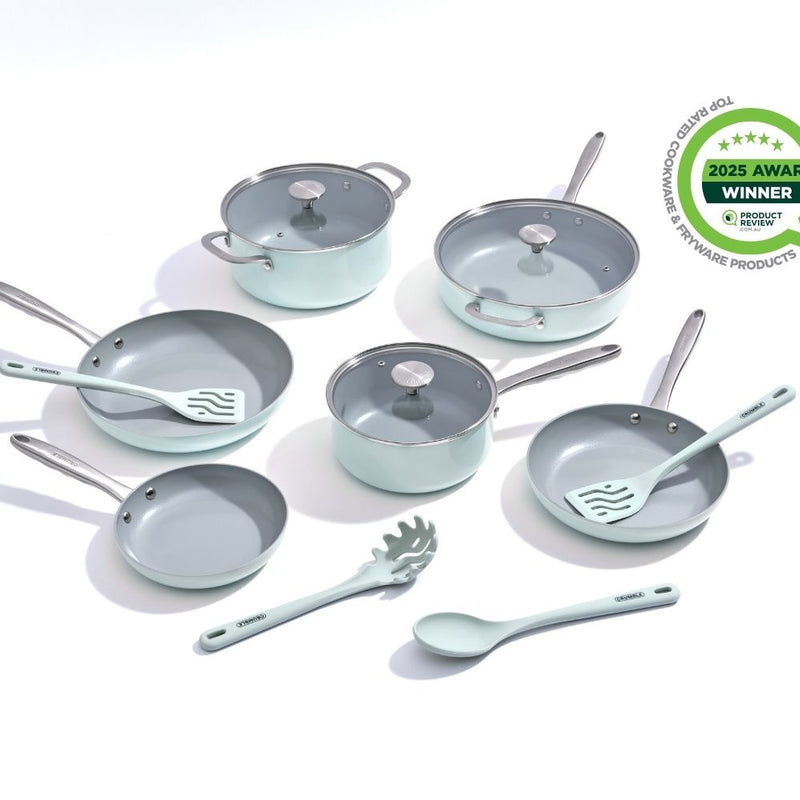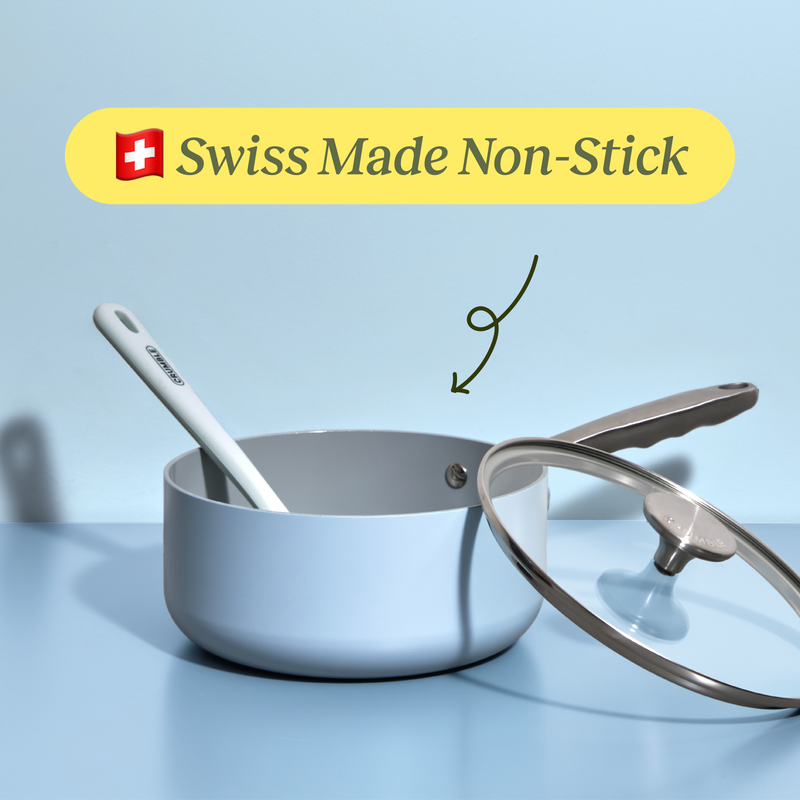


Ceramic cookware is one of the easiest types of cookware to care for, but to keep it performing at its best, a little maintenance goes a long way. While it’s naturally non-stick and doesn’t require seasoning like traditional cast iron, proper cleaning and handling will help extend its lifespan and keep it looking as good as new. Here’s everything you need to know about cleaning and maintaining your ceramic cookware set so it stays in top shape for years to come.
Keeping your ceramic cookware in top shape is easy (when you have insider tips!)
The good news is that ceramic cookware is easy to clean. Because of its ultra-smooth surface, most food releases without much effort. That said, using the right cleaning method will prevent damage and keep the non-stick surface working effectively.
While some ceramic cookware is labeled as dishwasher safe, hand washing is always the better option. Dishwashers can expose your cookware to harsh detergents and high heat, which may wear down the ceramic coating over time.
If you’re in a rush, you can put Crumble’s ceramic cookware in the dishwasher occasionally, but frequent hand washing will help preserve its longevity.
Washing your ceramic cookware by hand is one of the best ways to keep it looking good and cooking properly for years.
Never put a hot ceramic pan straight into cold water. Sudden temperature changes can cause thermal shock, which may lead to cracks in the coating. Instead, allow the pan to cool naturally before washing.
While ceramic cookware doesn’t rust like cast iron, prolonged soaking can weaken the non-stick coating over time. If there’s stuck-on food, a quick soak of 10 to 15 minutes should be enough to loosen it (just don’t leave it submerged overnight!)
Even with proper use, stains and burnt bits can sometimes build up. Here’s how to tackle them without damaging the ceramic surface.
Baking soda is a gentle but effective cleaner that won’t scratch your cookware.
For extra stubborn stains, you can also try boiling a mixture of water and vinegar in the pan before scrubbing.
Over time, ceramic cookware can develop slight discoloration, especially with frequent use. White vinegar can help lift stains and restore the surface.
Ceramic cookware is designed to be low-maintenance, but a few simple habits will help it last much longer.
Avoid cooking with with metal – instead, opt for wood, silicone or nylon utensils
Metal utensils can chip or scratch the ceramic coating, reducing its non-stick effectiveness. Stick to:
Avoid cutting food directly in the pan or using metal whisks, as this can damage the surface.
Ceramic cookware retains heat super well, so high heat isn’t necessary. Cooking on low to medium heat helps prevent food from sticking and protects the coating from wear.
If you need to sear meat or cook at a higher temperature, preheat the pan slowly and use a little oil to help protect the surface.
While ceramic cookware is naturally non-stick, adding a small amount of oil or butter before cooking helps maintain its performance. Avoid aerosol cooking sprays, as they can leave behind a residue that builds up over time and affects the surface.
Cooking with too many ingredients at once can cause uneven heat distribution and lead to food sticking. Give food enough space to cook properly, and if needed, cook in batches rather than piling everything in at once.
To avoid food cooking, don’t crowd the pan or cook in batches if you need to!
Stacking ceramic pans directly on top of each other can cause scratches and wear down the coating. To store them safely:
If space is tight, consider using pan protectors to keep the ceramic surface from rubbing against other cookware.
Caring for Crumble’s ceramic cookware is simple – hand wash it, cook with a little oil, avoid high heat, and store it properly. Simple, right? With the right care, your ceramic pans will stay non-stick, easy to clean, and free from harmful chemicals for years.
Looking to make the switch? Check out Crumble’s ceramic cookware sets.